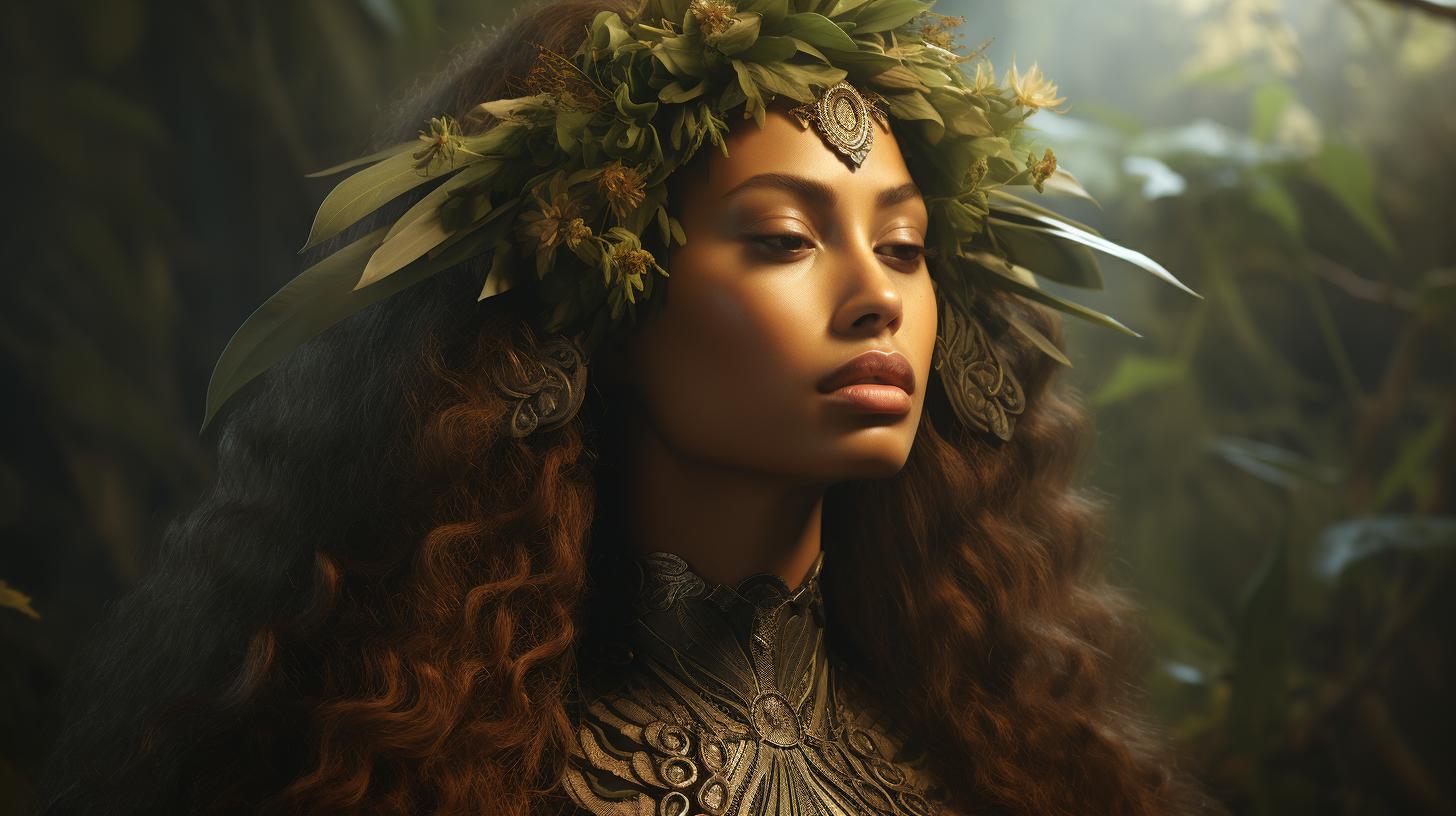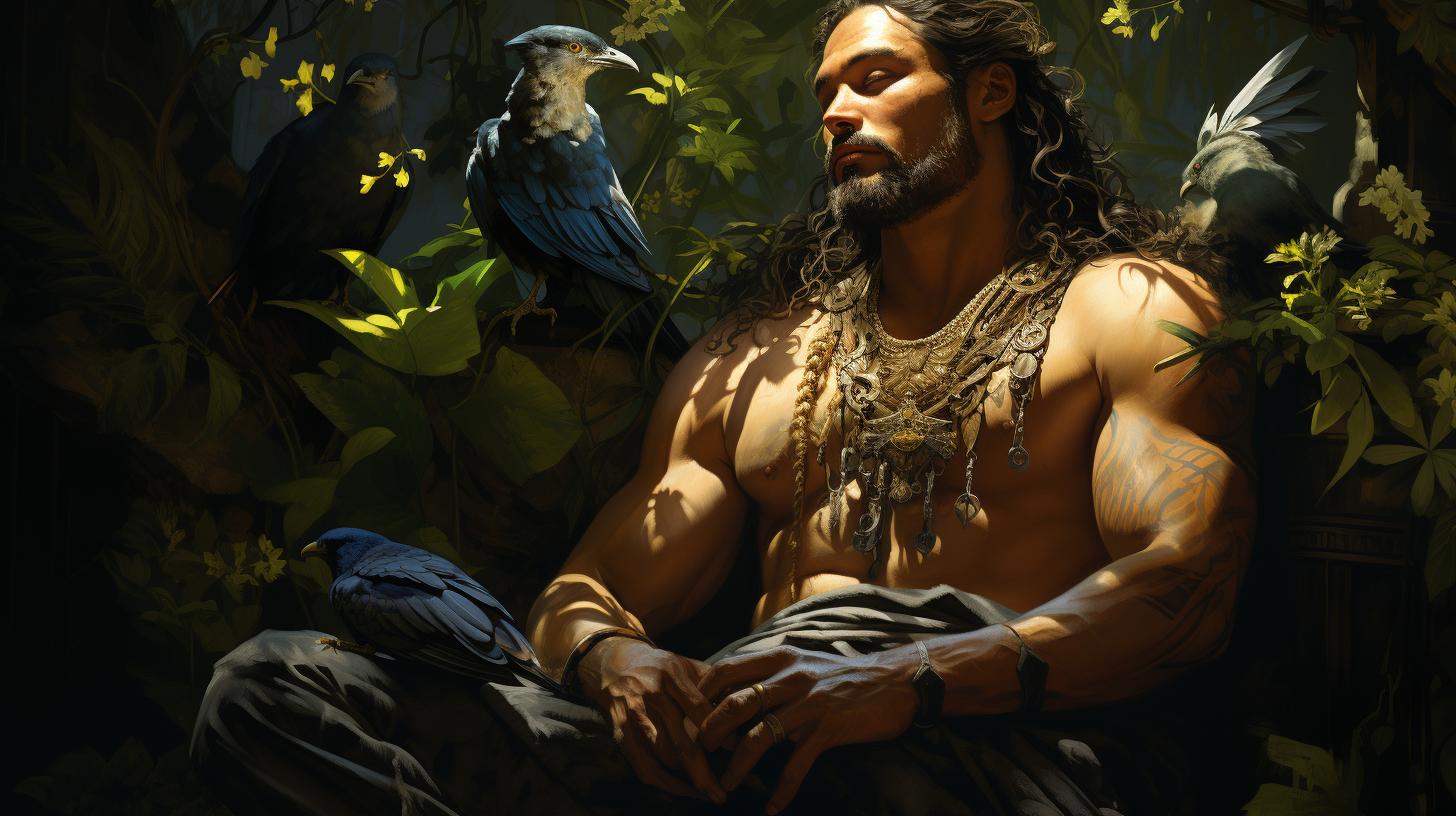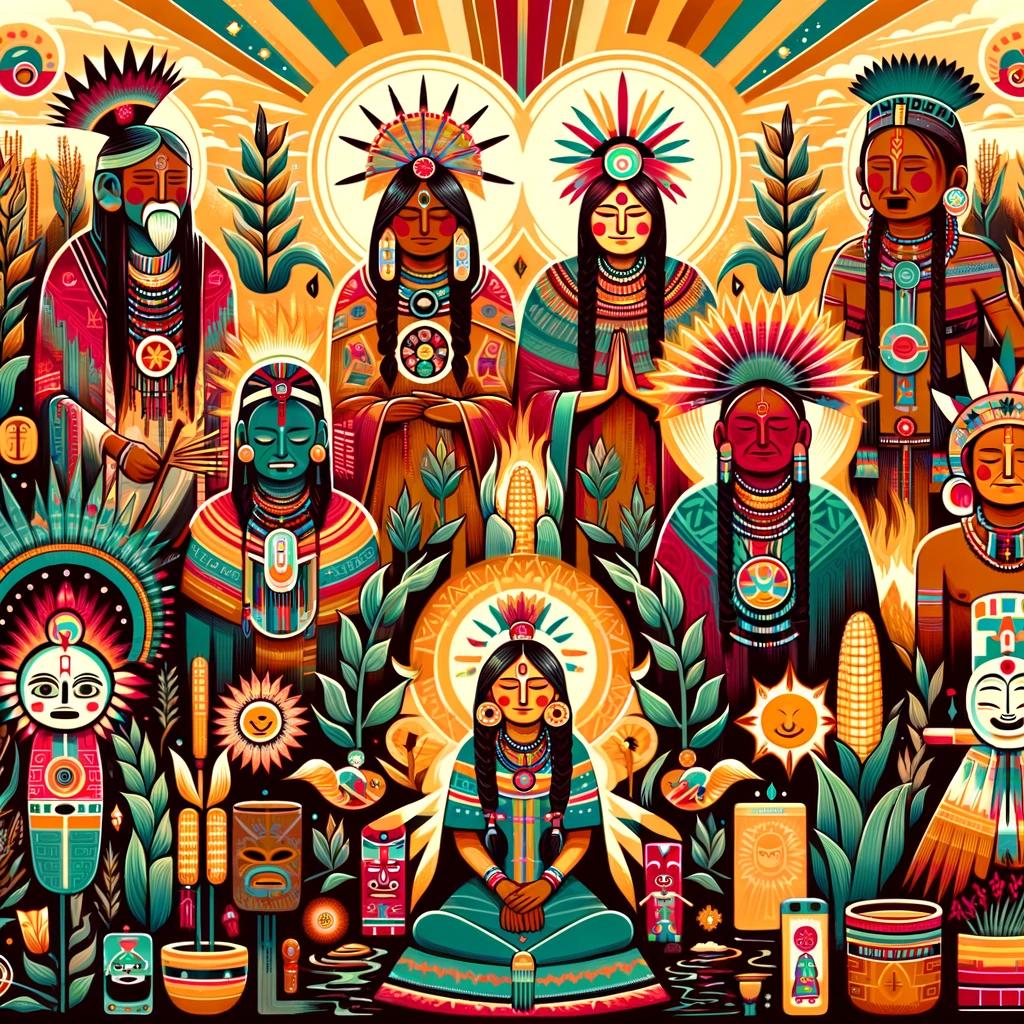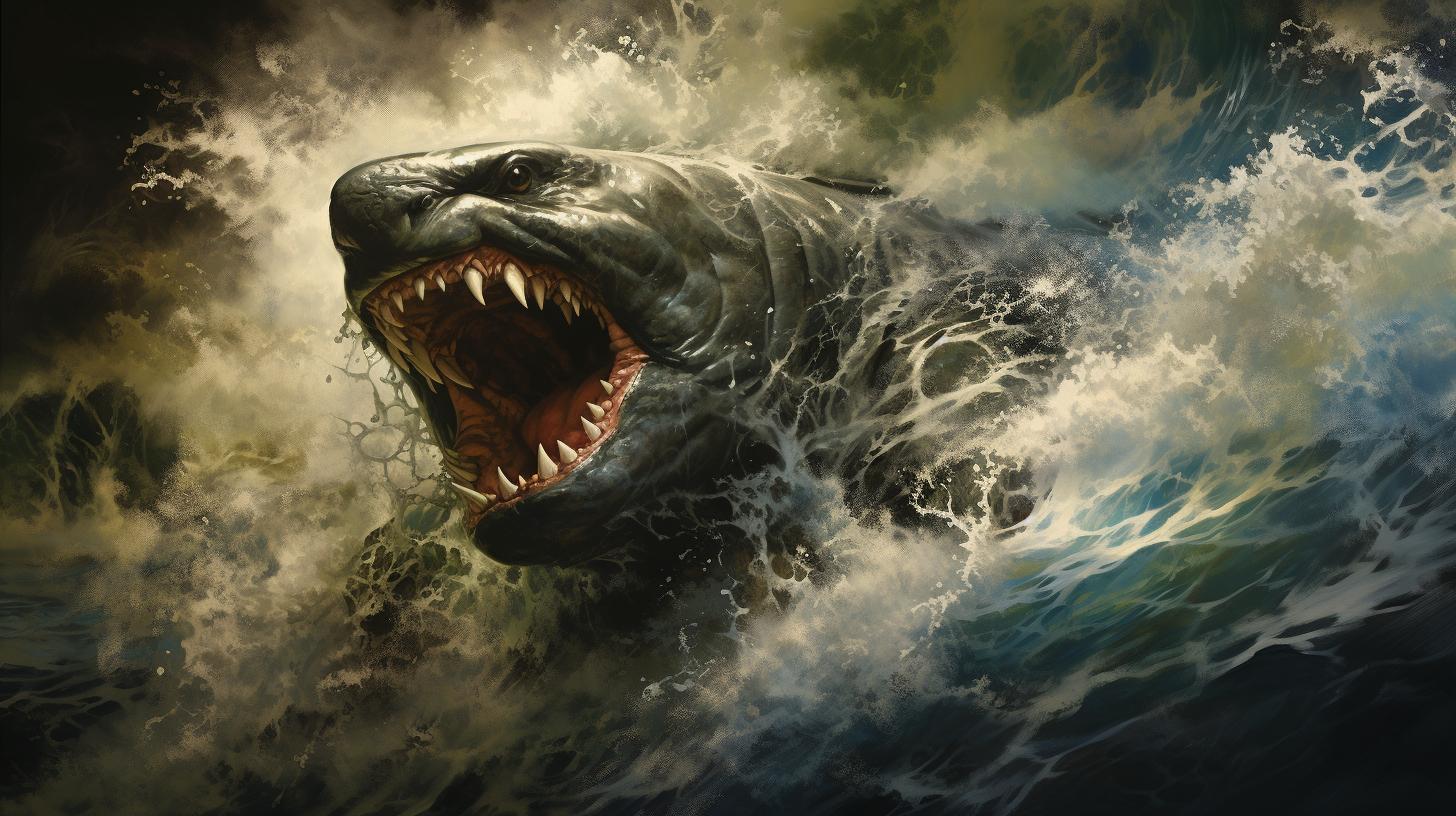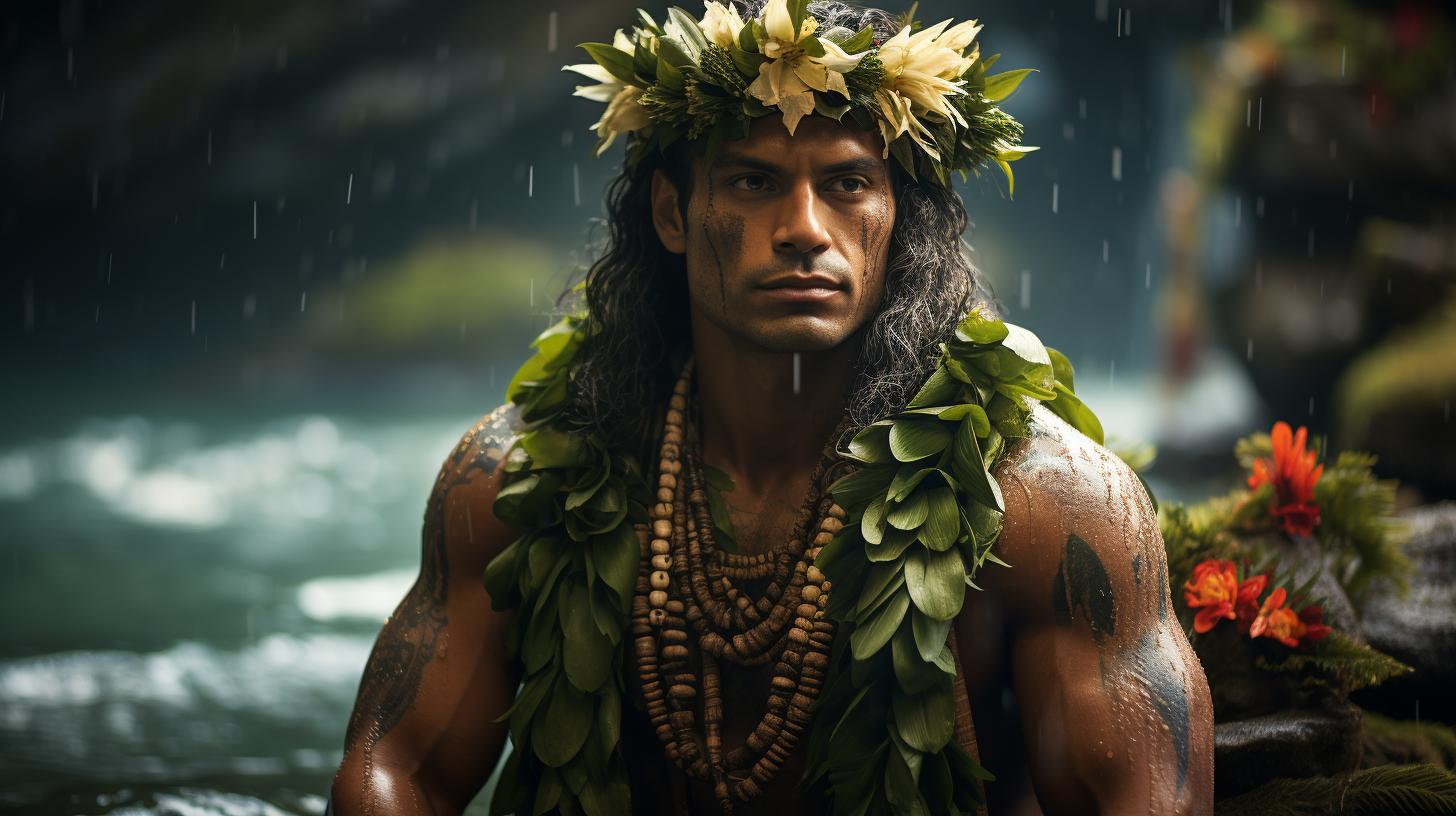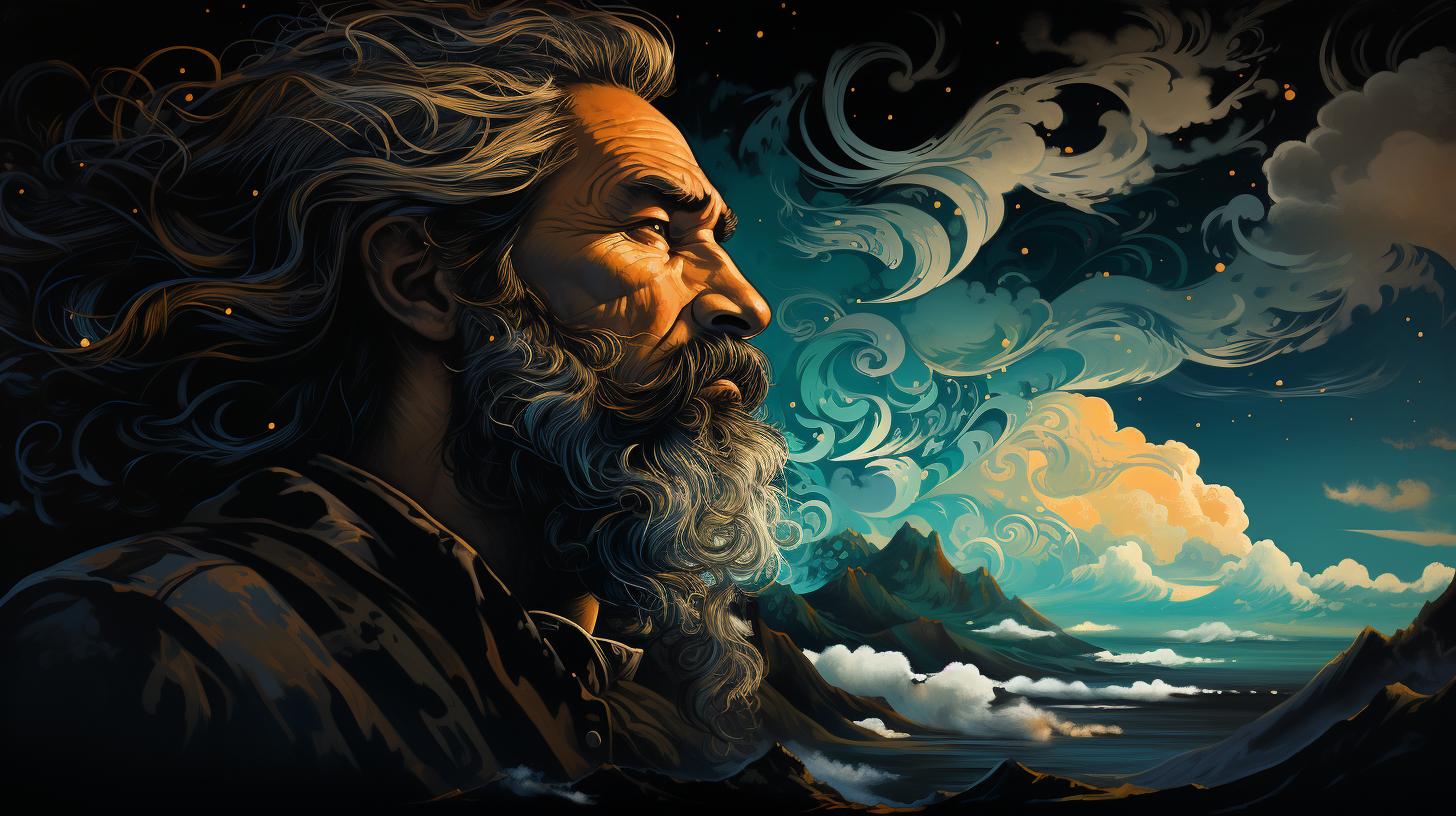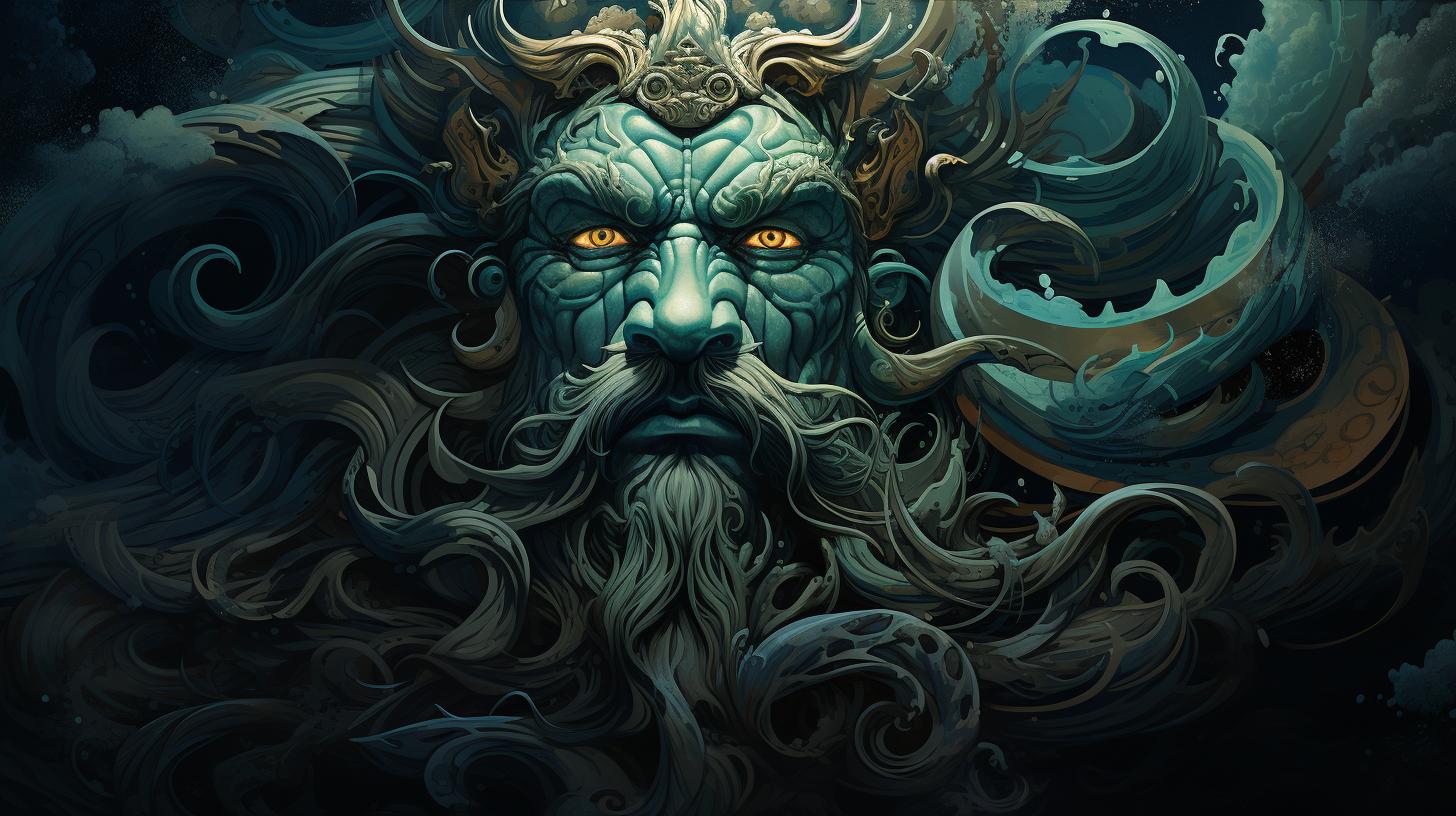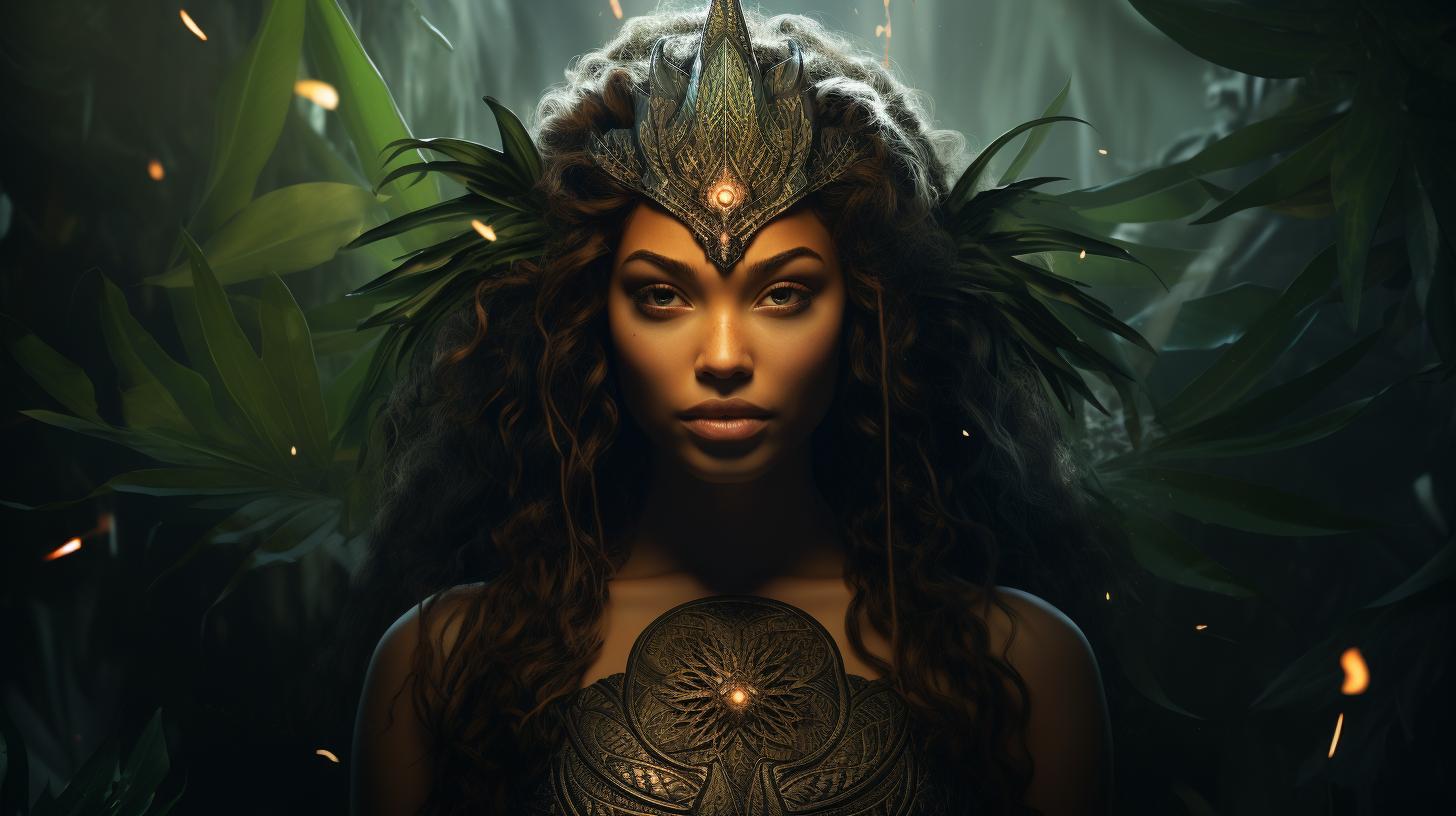Hawaiian Goddess Papa: The Sacred Earth Mother of Hawaii
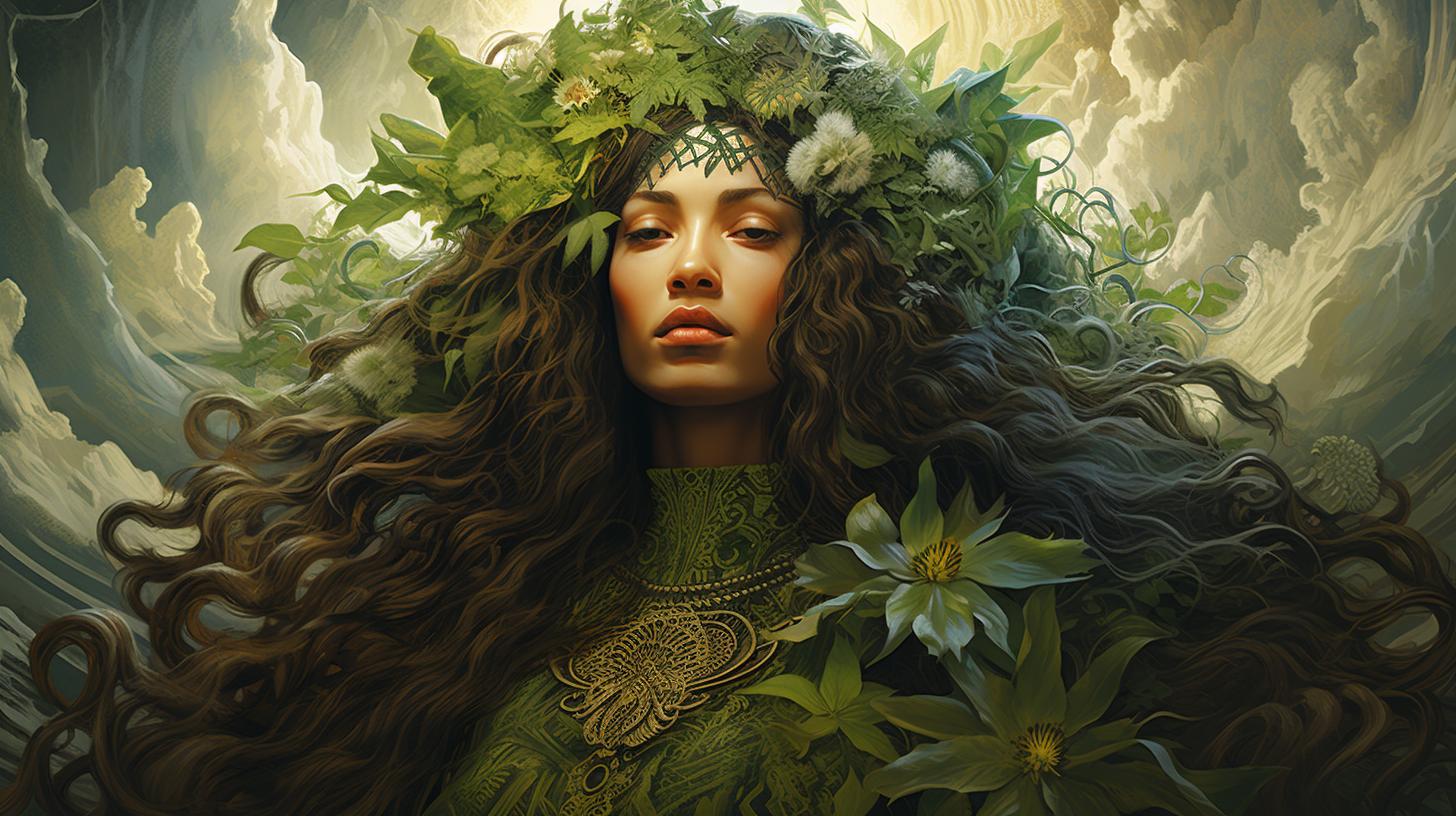
Papa, the Hawaiian goddess of the Earth, holds a significant role in Hawaiian mythology. She is believed to be the mother of all things and the creator of the land and sky.
According to legend, Papa and Wakea, the first parents, gave birth to human life, as well as the flora and fauna nourished by the earth and sky. Explore the origins and importance of Papa in Hawaiian culture.
Discover the fascinating mythology of other Hawaiian deities, such as the fiery Pele, the sea god Kanaloa, and the fertility goddess Laka.
Hawaiian Goddess Papa: The Earth Mother of Hawaii
Welcome to the fascinating world of Hawaiian mythology, where we delve into the rich history and significance of the revered goddess Papa.
In this section, we will explore the origins and profound meaning of Papa within Hawaiian folklore, as well as unravel the intricate relationship between Papa and Wakea, the first parents of Hawaii.
Origins and Significance of Papa in Hawaiian Mythology
Papa, the prominent Hawaiian goddess, holds a pivotal role in Hawaiian mythology as the Earth Mother of Hawaii. She is esteemed for her creative power in shaping the land and sky, making her an essential figure in the origin stories of the Hawaiian Islands.
The name Papa translates to “superficial surface,” symbolizing the uppermost layer of the earth where seeds are nurtured and fertilized.
Papa also embodies the essence of fertility, abundance, and providence. She is associated with the earth, the underworld, and the cycles of growth and harvest.
As the mother of all, she is revered not only for giving birth to human life but also for the creation and sustenance of plants and animals that rely on the earth’s bountiful offerings.
Relationship between Papa and Wakea: The First Parents
A fundamental aspect of Hawaiian mythology is the profound connection between Papa and Wakea, who are considered the first parents and creators of the Hawaiian Islands. Wakea, the god of light and the heavens, complements Papa’s role as the goddess of the earth and the underworld.
Their union represents the cosmic balance between the heavens and earth, as Wakea brings forth the sun’s light and the rain that nourishes the land. Together, they gave birth to life, unleashing a flourishing ecosystem that harmoniously intertwines human, plant, and animal existence.
Their story unfolds in the mythical tale of Papa birthing a pumpkin, from which the different elements of the land and ocean are formed. Wakea subsequently casts the pumpkin’s lid into the sky, transforming it into the celestial sphere.
The pulp becomes the sun, the seeds become stars, the white layer becomes the moon, and the matured white flesh evolves into clouds. The juice spills onto the clouds, transforming into life-giving rain.
This enchanting narrative underscores the profound bond between Papa and Wakea, emphasizing the interdependent relationship between the earth and sky, and the significance of their union in the creation and sustenance of life in Hawaii.
Hawaiian God of Fire: Exploring the Mythology of Pele
Pele, the Hawaiian goddess of fire, is a powerful and captivating figure in Hawaiian mythology.
She is associated with the volcanoes of Hawaii, embodying both destructive and creative forces. The stories and legends surrounding Pele offer insight into the volcanic landscape and the spiritual significance of fire in the Hawaiian culture.
Pele is believed to have been born in Tahiti and journeyed to the Hawaiian islands, specifically to the island of Hawaii, where she is most revered. She is often depicted as a passionate and fiery deity, known for her volatile temperament and her ability to shape the land with her volcanic eruptions.
Pele’s presence is felt throughout the archipelago, as her volcanic activity continues to shape and transform the landscape over time.
According to the legends, Pele has a rivalry with her sister, the water goddess Namakaokaha’i. The conflict between these two powerful deities represents the eternal battle between fire and water, and is believed to be the source of volcanic eruptions and the creation of new land.
Many ancient Hawaiian legends recount the epic battles and encounters between Pele and Namakaokaha’i, symbolizing the continuous struggle and balance between these opposing forces of nature.
Pele is also associated with the creation of the hula dance, one of the most significant cultural traditions in Hawaii. According to legend, Pele used her passion and fiery energy to create the mesmerizing movements and rhythms of the hula, infusing it with her divine essence.
The hula is seen as a sacred art form that pays homage to Pele and captures the spirit of the islands.
Devotees and believers often make pilgrimages and offerings to the various volcanoes associated with Pele, seeking her blessings and protection. It is not uncommon to find altars and shrines dedicated to Pele throughout the Hawaiian islands, where people offer chants, flowers, and other offerings in reverence to this fiery goddess.
The mythology of Pele offers a glimpse into the complex and mystical world of Hawaiian spirituality. Through her fiery presence and volcanic activity, Pele embodies the raw power of nature and the profound connection between the elements and the people of Hawaii.
Exploring the mythology of Pele is a journey into the heart of Hawaiian culture and its deep reverence for the forces of fire, creation, and transformation.
Kanaloa: The Forgotten Hawaiian God of the Sea
Kanaloa, a lesser-known deity in Hawaiian mythology, holds a significant place as the god of the sea.
Despite being overshadowed by the more popular goddess Pele, Kanaloa plays a crucial role in the traditional beliefs of the Hawaiian people.
Associated with the vast and powerful ocean, Kanaloa embodies the mysteries of the deep.
He is often depicted as a gentle and benevolent deity, watching over fishermen, sailors, and all those who venture into the waters. As the counterpart to the sky god, Kanaloa represents the balance between the heavens and the sea.
Legends tell of Kanaloa’s ability to control the tides, waves, and various sea creatures. He is believed to have dominion over the abundance of marine life, providing sustenance and livelihood to the Hawaiian people.
His influence extends beyond the physical realm, as he is revered as a spiritual guide and protector by those who rely on the ocean for their survival.
Despite his importance, Kanaloa has unfortunately been somewhat forgotten in contemporary Hawaiian culture.
Many ancient stories and rituals surrounding Kanaloa have faded over time, resulting in a waning recognition of this once prominent deity. However, efforts are being made to revive and rekindle the reverence for Kanaloa, particularly by those who recognize the importance of preserving Hawaiian traditions and spirituality.
Today, with increased awareness and interest in the rich cultural heritage of Hawaii, there is a growing movement to acknowledge Kanaloa’s significance and restore his rightful place among the Hawaiian pantheon.
By rediscovering and honoring this forgotten god of the sea, the Hawaiian people can continue to strengthen their connection to the ocean and the natural world that surrounds them.
Hawaiian Goddess of Fertility: Laka and the Celebration of Life
The Hawaiian goddess Laka holds a significant place in Hawaiian culture, particularly in relation to fertility and the celebration of life.
Her influence permeates various aspects of Hawaiian traditions and customs.
Laka’s Influence on Hawaiian Culture and Traditions
Laka is widely revered for her association with hula, the traditional Hawaiian dance form. As the goddess of dance, she embodies grace, beauty, and vitality, infusing hula performances with an enchanting energy.
Hawaiians honor Laka through hula ceremonies and rituals, which serve as a way of expressing gratitude for the abundance of life. These celebrations celebrate the natural world and its interconnectedness with humanity.
Furthermore, Laka’s influence extends beyond hula to encompass other areas of Hawaiian culture, including music, storytelling, and visual arts. Her essence is felt during various festive occasions, where hula and other creative expressions are showcased.
Sexual Symbolism and Rituals Associated with Laka
Within the realm of fertility, Laka embodies the sacred feminine energy and acts as a symbol of sexual potency and procreation. Hawaiian mythology depicts Laka as the embodiment of sensuality and desire, highlighting the interconnectedness of physical pleasure and spiritual connection.
Traditional rituals associated with Laka often incorporate elements of sexuality, celebrating the life-generating power of intimate union and embracing the cycles of birth and rebirth. These rituals serve as a way to honor Laka’s role in sustaining life and ensuring the continuity of the Hawaiian people.
- Laka’s association with fertility rituals reinforces the reverence Hawaiians hold for the interconnectedness of nature and humanity.
- Through these rituals, they seek blessings for abundant harvests, prosperous lives, and the continuation of their cultural heritage.
- By embracing Laka’s fertility symbolism, Hawaiians express their deep respect for the cycles of life and the essential role of procreation in sustaining their communities.
In essence, Laka, as the Hawaiian goddess of fertility, holds a vital place in Hawaiian culture.
Her influence extends to various aspects of life, including hula, celebrations, and rituals that honor the interconnectedness of humanity and the natural world.
.











